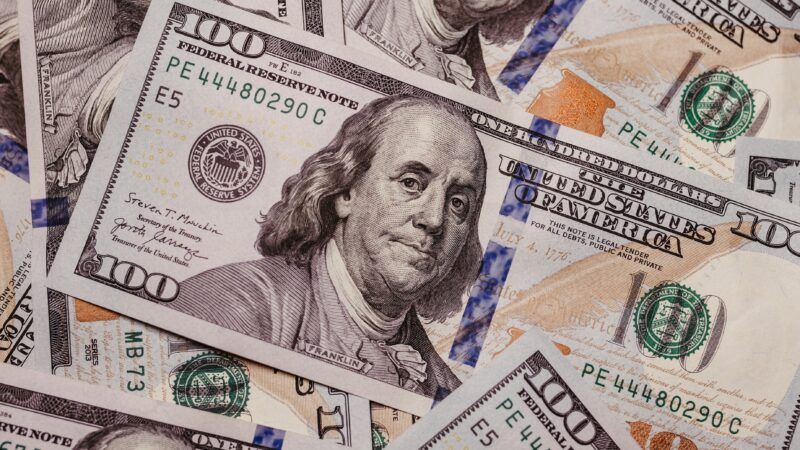U.S. Credit Rating Downgrade Is a Sign of Government Dysfunction
The national debt has ballooned from $14 trillion to $32 trillion in a little over a decade.

An increasingly unstable fiscal outlook and an elected government that won't do anything about it have triggered America's second-ever credit rating downgrade.
Fitch Ratings downgraded the U.S. government's credit rating from "AAA" to "AA+" on Tuesday afternoon, signaling to investors that America's Treasury bonds are a qualitatively less ideal purchase. In its announcement, Fitch said the downgrade reflected the federal government's growing mountain of debt and the country's fraught political dynamics—most recently evidenced by the brinksmanship over the debt ceiling that nearly triggered a default on the national debt.
"The repeated debt-limit political standoffs and last-minute resolutions have eroded confidence in fiscal management," Fitch said in its announcement. The change also reflects an "expected fiscal deterioration" over the next few years, as the federal deficit is projected to grow wider, adding to America's already staggering total of $32 trillion in national debt.
The rating service also pointed to the widening gap between the federal government's tax revenue and its spending, as well as the "limited progress" being made toward solving looming issues like the projected insolvency of Social Security in the early 2030s.
While the AA+ rating reflects that U.S. debt remains a trustworthy investment, Fitch's downgrade is a warning signal about the federal government's fiscal trajectory.
The downgrade "should be a wake-up call," said Maya MacGuineas, president of the Committee for a Responsible Federal Budget, a nonprofit that advocates for smaller deficits, in a statement. "We need to get our country's fiscal and political house in order. The United States economy remains strong, but we are on an unsustainable trajectory."
The national debt is on course to double relative to the size of America's economy in the next 30 years, and as the debt grows, so will the cost of interest payments. The Congressional Budget Office (CBO) estimates that interest on the national debt will consume one-third of the federal budget by 2050. That means more than 30 cents of every dollar taxed out of the economy will be directed towards the ongoing costs of past deficit spending rather than being used to cover government services.
"High and rising debt would have significant economic and financial consequences," the CBO warned in June, echoing similar recent concerns raised by the Government Accountability Office and non-governmental groups. The mountain of debt will "slow economic growth, drive up interest payments to foreign holders of U.S. debt, elevate the risk of a fiscal crisis, increase the likelihood of other adverse effects that could occur more gradually, and make the nation's fiscal position more vulnerable to an increase in interest rates," the CBO said.
Fitch is the second of the "big three" credit rating firms to downgrade the federal government from its highest to second-highest category. In 2011, Standard and Poor's (S&P) knocked America's debt rating from AAA to AA+, where it remains today.
That change also followed a tense political standoff over the debt ceiling, though the federal government had a now-quaint $14 trillion in debt at the time. The current total is over $32.6 trillion.
Doubling your debt in just over a decade is a good way to scare off those who might lend you more money in the future. Given current fiscal and political trends in Washington, it was a question of when, not if, the U.S. would see another credit rating downgrade.
Unless something dramatically changes, this is unlikely to be the last.



Show Comments (20)